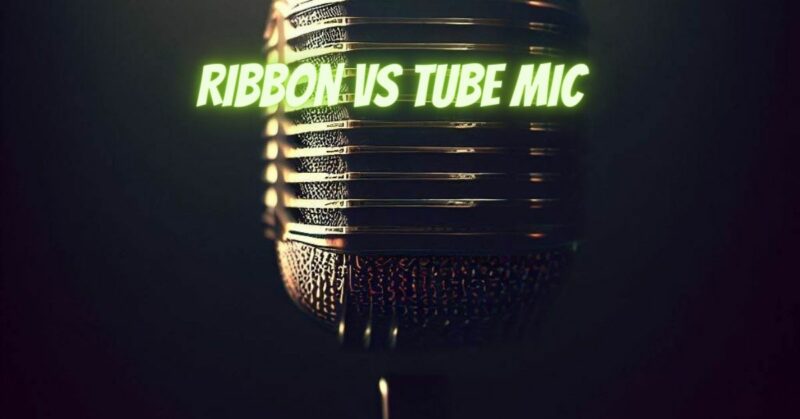When it comes to capturing audio with exceptional warmth, character, and vintage appeal, ribbon and tube microphones have long been favored by recording professionals. Each of these microphone types brings a distinct sonic signature to the table, offering unique tonal qualities that can greatly influence the recording outcome. In this article, we will explore the differences and similarities between ribbon and tube microphones, shedding light on their respective strengths and applications.
Ribbon Microphones:
- Sonic Characteristics: Ribbon microphones are renowned for their smooth, natural, and vintage-like sound. They excel in capturing fine details, delicate nuances, and a warm tonal character. They have a natural roll-off in the high frequencies, resulting in a pleasing and balanced response.
- Transient Response: Ribbon microphones have a fast transient response, capturing transients with accuracy and precision. This makes them well-suited for capturing dynamic instruments such as drums, strings, and brass, where preserving the transient details is crucial.
- Durability: Ribbon microphones have delicate, thin ribbons suspended between magnets, requiring careful handling to prevent damage. While they deliver exceptional sound quality, they are more sensitive and delicate compared to other microphone types.
Tube Microphones:
- Sonic Characteristics: Tube microphones are revered for their rich, warm, and vintage-inspired sound. They often exhibit a smooth and creamy top end, gentle harmonic distortion, and a pleasing saturation. This tonal character can add depth and character to vocals, instruments, and recordings.
- Vacuum Tubes: Tube microphones employ vacuum tubes in their circuitry, which contribute to their distinct sound. The tubes impart a subtle coloration and harmonic distortion, creating a pleasing analog warmth that is often sought after in recordings.
- Versatility: Tube microphones are known for their versatility across various recording applications. They can capture a wide range of instruments and vocals with musicality and depth, making them popular choices in studios for a classic, vintage sound.
| Feature | Ribbon Microphones | Tube Microphones |
|---|---|---|
| Sensitivity | Very sensitive | Less sensitive than condenser microphones |
| Frequency response | Wide frequency response | Wide frequency response than dynamic microphones |
| Clarity | Smooth, warm sound | Warm, “tubey” sound |
| Price | More expensive | More expensive |
| Power requirements | Do not require phantom power | Require phantom power |
| Susceptibility to feedback | More susceptible to feedback | Less susceptible to feedback |
Choosing Between Ribbon and Tube Microphones:
- Ribbon microphones are well-suited for capturing detailed, natural, and vintage-sounding recordings. They excel in capturing acoustic instruments, vocals, and scenarios that require accurate transient response.
- Tube microphones offer a rich, warm, and harmonically pleasing sound, making them ideal for vocals, guitar amps, and situations where a vintage character is desired.
Conclusion:
Both ribbon and tube microphones have their unique sonic qualities, making them valuable tools for recording engineers and musicians. Ribbon microphones deliver a smooth, natural, and vintage-like sound with accurate transient response, while tube microphones offer a rich, warm, and harmonically pleasing tone. The choice between ribbon and tube microphones ultimately depends on the desired sound, application, and personal preference. By understanding their individual characteristics, recording enthusiasts can make informed decisions to achieve the desired sonic aesthetic in their recordings.


